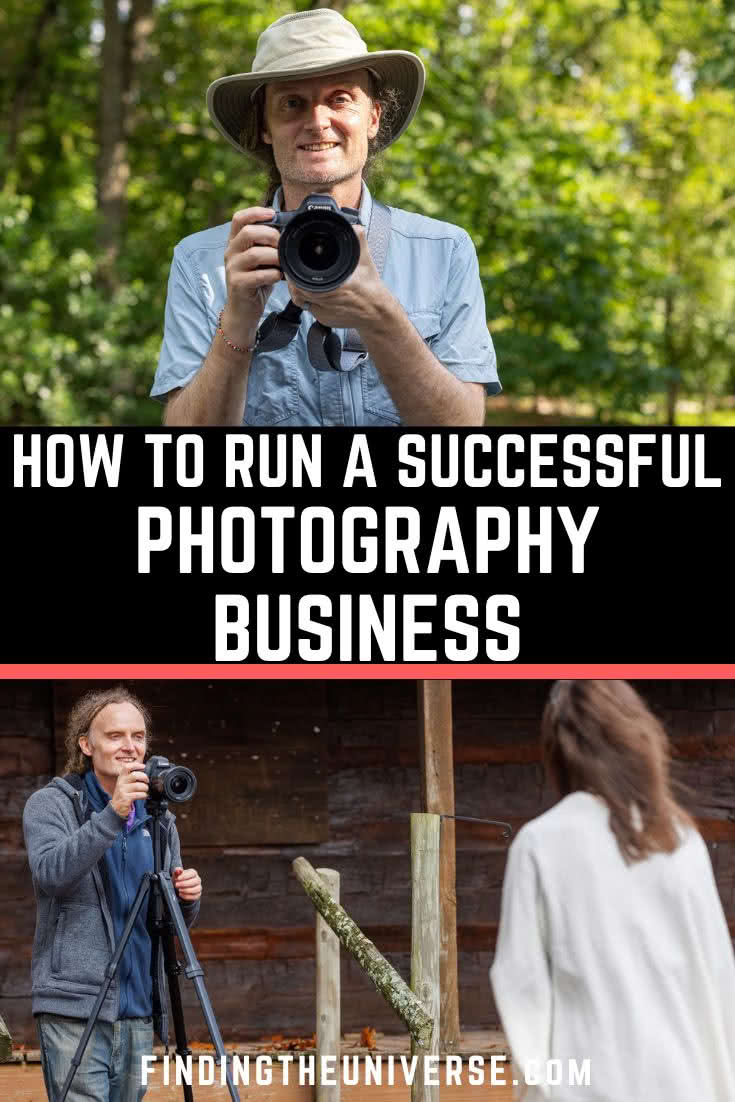As a professional photographer who runs a photography business, including an online photography course, I am often asked if I have any tips on how to run a successful photography business.
I also get e-mails from time to time from readers asking me why their photos aren’t selling. Possibly they’ve set up an online photo sales store using a site like SmugMug, but they are struggling to find an audience. They are wondering where they might be going wrong. If that’s you, this guide should help.
I have already written a guide to how to make money as a photographer, which covers the various income streams available to you when you are starting out as an amateur photographer. This guide isn’t going to focus on that. Instead, it’s going to look more at what you need to do to actually succeed with your photography business.
So, whether your photography business is about selling your photos, working as a wedding photographer, running photography tours and workshops or selling stock photos, this guide should help ensure you focus on the right things to get your business running successfully. This is based on my years of actually running a successful photography business and what has worked for me.
10 Tips for Running a Successful Photography Business
I’m now going to go through my tips for running a successful photography business. These are not in any specific order, I’d say they are all equally important to your success!
Craft your Skill
One common mistake I see with aspiring professional photographers, and one which is easy to fall into, is basically trying to run before you can walk.
What I mean by this is that it is really important to ensure that you are actually creating a good enough service or product that people will want to buy from you before trying to make a living from it.
This can be tricky to establish, especially as the initial feedback we get on our photos is likely to be from friends and family. They will tend to offer very positive feedback, which is of course very nice, but unfortunately might not provide the sort of constructive feedback we really need.
Buoyed by all the positive feedback, it can be easy to jump straight into building an online portfolio, uploading a pile of photos, and then sitting back and waiting for the money to roll in. If it does, great! If it doesn’t, it can be a disheartening experience.
It can also be a costly experience, as many online portfolio sites charge a fee, which you need to be able to cover from your income. If you aren’t making an income, you’re going to be operating at a loss, which is not a good place to be.
Even worse would be to set up as a wedding photographer, book your first gig, and then not be able to deliver to your client’s expectations. This can result in anything from disappointed clients to negative reviews to, in a worst-case scenario, being sued for not delivering a quality service.
So, what to do? Well, first you need to spend time actually developing your photography skill. That might mean reading online photography guides, watching photography focused videos, signing up to a photography course, or taking a local photography class. There’s a huge amount of content available for free, and of course there are also paid resources.
You also need to get out there and practice your photography as much as possible. Photography is a skill, and it is one that can be continuously improved. If you are planning on becoming a wedding photographer for example, you might be able to find an existing photographer who needs a second shooter, and this can be a good way to develop your skills in a real-world environment.
When you are starting out I highly recommend volunteering to assist in doing actual gigs such as being a back-up wedding photographer, interning at a photo studio, shooting at an event as a volunteer, or shadowing a working photographer. Doing a bit of work for free can allow you to get some experience and stretch your wings without the pressure of being the one responsible for the final product.
If you plan to make an income from your photography then I would argue that it’s best to invest up front in your skillset first and foremost. As I said, it can be easy to put the cart before the horse, whether that’s paying for an online e-commerce store or spending thousands on gear. You need to know to use the gear so you can create content good enough to sell in your store, and that should definitely be the priority.
Now, to circle back to my previous point, which is how to know if you are at the point where you are actually creating content that is going to be good enough to sell. Of course, there’s no fixed goal, and a lot will come down to the market you are selling into and the products you are selling. If you’re the only wedding photographer in town for example, then it will likely be easier to find clients even if you are a bit less experienced. However, if you’re competing in an established market, you might have to level up your skills more to be able to compete.
Still, there are ways to know if your work is at the level where it can sell. First is feedback with buyer intent. That means, if people start to contact you, perhaps having seen your work on your social media feed, and ask if they can either buy your work or hire you to do a shoot. Ideally these will be total strangers who have nothing vested in your success. This is a strong indicator that your work really is good enough to start making an income from.
I’d also highly recommend seeking out ways to get constructive feedback on your work. In-person photography clubs, online groups and forums, and photography classes with a homework element can be a good way to get this feedback.
You basically want total strangers to be looking at your work, who aren’t worried about your feelings, to provide input as to what is good about it and what could be improved. A word of warning, this kind of feedback can sometimes be challenging to hear, especially if you have primarily only gotten glowing feedback from friends and family. But it is definitely important to a) help you improve and b) get you the point where you can feel confident in putting your product up for sale.
Finally, another way to get validation of your work is to enter photography competitions which are judged by real people (not social media popularity contests!). There are a lot of these, some paid, some not.
I’d suggest focusing on the free competitions to start with. If you start to place your work in these competitions, this can also be positive validation. It can also be a useful accolade to add to your photography resume.



Do your Research on the Type of Photography Business
Before launching a photography business, you will want to do some research into the type of business you plan to run to make sure it’s a feasible business idea.
There are multiple ways to make money as a photographer including:
- Selling photos – this can be selling physical prints, digital images, licenses to use an image, canvases, etc.
- Selling photo art products – using your photos to create unique products. Photos can be printed on all sorts of things, such as greeting cards, pillowcases, phone cases, fabric, ornaments, clothing, coffee mugs, postcards, wallpaper, tote bags, etc.
- Taking portrait studio photos – family photos, student yearbook photos, pet photos, graduation photos, cruise photos, portfolio photos, catalog and fashion photography
- Wedding / event photography – engagements, weddings, parties, business conferences, music festivals
- Business / product photography – taking photos for business websites, doing product photography, food photography, taking photos of cars, hotel rooms, houses/apartments etc.
- Stock photography – taking photos to be sold on stock photo websites. A lot of the most popular are fairly generic photos with wide appeal (e.g., man holding coffee cup while looking surprised at computer, family on sunny beach in California, elderly woman crossing street), but stock photography can also include fine art photos or photos of famous people which can command much greater prices.
- Photojournalists – photographers who take photos to be featured in newspapers, online news articles, magazines, TV programs, etc. to go along with news stories.
- Education – this can mean running photo workshops, writing about photography, teaching online or in person classes, giving talks etc.
- Leading photography tours – taking guests on photography specific tours, either locally or in popular photography destinations
There are of course other ways to make money from photography but those should give you a lot of ideas and most photographers will fit into one of those general areas. Many working photographers make money in a number of different ways and I myself have done work in at least half of those types of photography at one time or another.
I would recommend choosing one or two specific areas you want to start with, and then later you can always expand once you are established and making money in those initial areas.
Once you have chosen how you want to make an income from your photography, you will want to try to figure out what you want to focus on and do the research on what is already out there. You want to understand what kinds of products/services are being offered, and does it match with your skills and interests etc.
So, for example, let’s say you know you want to sell photos. Specifically, you decide you want to take photos and sell them online as either prints or digital images.
Now you have to decide what kind of photos you want to sell as it’s much easier if you are known for a certain type of subject or style. Whether that is fantasy fine art photography, bird photography, NYC street photography, abstract photos, or seascapes, it’s generally important to have a niche you are going to be known for.
Then you have to figure out the best place to sell and market your type of photos. Where and how do other photographers sell the type of photos you like to take?
Another example may be someone who wants to do studio photography focusing on babies and families. Lots of people like to get professional photos when they have babies and young kids.
But studio photography is something that is geographically bound so you want to make sure there is a strong market for this service in your area as renting studio space can be costly. So if you live in an area where most people are older and retired, focusing on baby photography is probably not a great business for your area and you may want to consider either another kind of photography or setting up in another area with a younger demographic.
You will also want to research your competition in the area. Whilst no competition might seem like a good thing, this can also be a warning sign that there is no market for the services you are offering.
Of course, this isn’t always the case, but it is worth bearing in mind. If there are existing businesses offering similar services, you will want to be sure that there is enough market to go around, and that you will be able to effectively compete.




Figure out your Audience and Market
Before you start off, it is best to figure out who is your typical customer. How old are they, where are they from, what are they looking for, what is their budget etc.
If you can get your products and services in front of people who are more likely to want to buy them, it’s going to make your life a lot easier.
For example, if you want to sell photos and mainly take beach landscapes in Florida, your best market is probably people living in coastal Florida and tourists visiting those areas of Florida. A combination of online, gift shops, and local art shops might serve you well as ways to target this audience. There will be an established market, and it should be easier to start selling your work.
In this example you may also want to diversify your offerings to appeal to your target audience across price points. Perhaps you offer larger original framed photos at the local art shops and cheaper smaller prints, greeting cards, and postcards at the local tourist souvenir shops.
If you are a wedding photographer, you’ll want to narrow down your geographical range (unless you plan to travel as a destination wedding photographer). And you’ll want to decide on type of weddings you want focus on and a style of photography so you can build a portfolio. You’ll also want to carefully decide on a pricing model.
If you are someone offering photo tours in Iceland for example, you’ll want to find ways to reach people planning travels there. An online presence is likely going to be very important, as well as perhaps connecting with travel agents, travel bloggers who write about Iceland, local tour companies in Iceland, etc.
If you are doing tours, you’ll also want to do a lot of ground research and practice, so you are knowledgeable and set up to handle such a tour in the destination.
As you can see, there’s a lot to think about. Ultimately, you want to make sure that an audience exists for the product you want to sell in the place you want to sell it, and that you will be able to reach that audience.


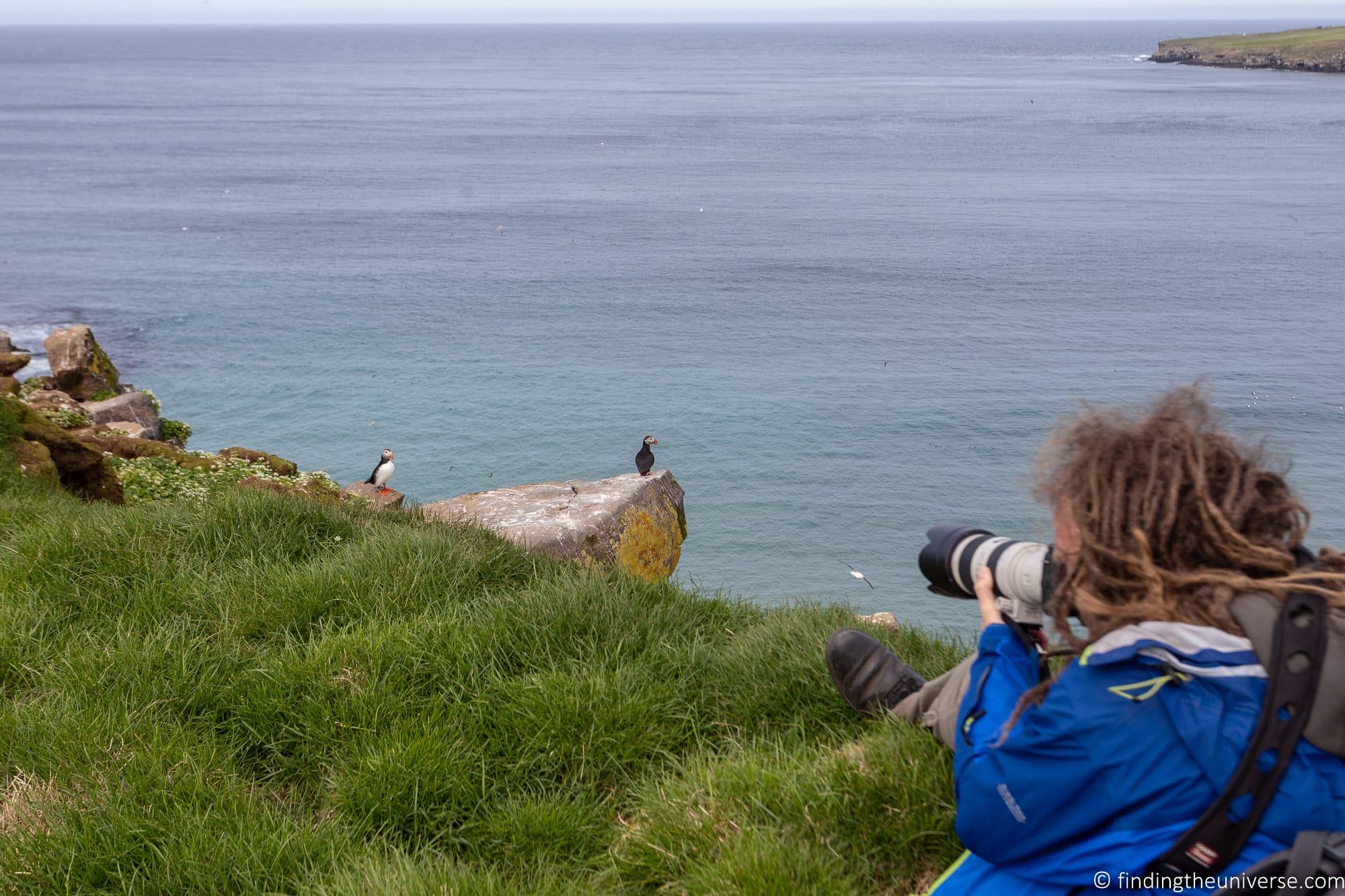

Run your Numbers
If you are planning on making money as a photographer, you need to treat the business like, well, a business. This might not be the most exciting part of being a professional photographer, but it’s certainly important if you want to run a profitable business.
So what does it mean? Well, you need to sit down with a tool like a spreadsheet and figure out how you’re going to make a profit. That means writing down all the costs associated with running your business, which is called your cost of business.
These costs will vary depending on your business model, but could include anything from the cost of gas getting to and from a shoot, to studio rent, equipment costs, insurance, taxes, marketing, photo editing software subscriptions, any professional fees (accounting etc.), shipping cost of products, printing costs, website costs etc. Some costs will be ongoing, others will be upfront one-off costs. You also want to consider how much you want to pay yourself.
Once you know the costs of doing business in your area, you can then start to put together a pricing model that will allow you to cover all your costs and, hopefully, turn a profit. At its simplest, you want to make more money selling your products and services than it costs you to produce them.
Put together a simple business plan and consider showing it to some trusted family members or friends for advice to see if it makes sense. There are lots of free online templates for business plans you can download for examples to get you started.
You will need to make various estimates when you put your pricing model together. For example, you might need to forecast how many weddings you might shoot in a year, or how many photos you plan to sell. It’s best to be conservative with your estimates when you start out. As you develop your business and build a reputation, you’ll be able to revise your numbers and likely increase your prices.
Whatever model you choose, be it an hourly billing rate as a wedding photographer, or a per product rate for sales, the goal is to put together a plan which makes financial sense and doesn’t have you running at a loss.


Price your Work/Services Accordingly
Speaking of pricing, this is a key consideration. Photography can be a tricky service to price, depending on what type of photography business you are setting up.
If you are offering a service like wedding photography, portrait photography, or a similar service, then you can fairly easily figure out pricing by simply researching other businesses in your general area (or areas with a similar demographic and income level) who might offer similar services.
Fees for these sorts of service tend to fall inside a certain range, and can be priced hourly or on a package basis. As an example, some wedding photographers charge a package price, whilst others might charge an hourly rate and then a fee per photo. A package rate tends to be commonly accepted (and can be easier in terms of knowing your income) but it’s up to you.
When you start off you will likely need to be at the lower end of the range in order to win clients and develop a reputation. As you build your reputation and get positive reviews and feedback, you can start to look at increasing your prices if you feel the market will support it.
If you plan to sell your photos, then you fall more into the world of art. Art is much more subjective, and so pricing can be highly variable. Mostly it comes down to how well established you are as an artist, the specific product you are selling (limited edition vs regular print for example), and the demand for the product you are selling in the location you are selling it.
Again though, I’d advise starting out on the low end of the pricing spectrum. Just make sure to cover your costs. As you develop a name for yourself and build an audience, you can start to think about increasing prices and things like limited edition or one-off prints that command more of a premium.
Your target market will also directly affect your prices. There’s no point setting high prices for prints you are selling locally if this makes your products unaffordable to most of the people in your area. However, if this is the case, you might consider selling online to reach a wider and more affluent market.
Now, while I do recommend starting out low, you want to be sure to increase your prices as you grow more confident in your skills and you become more known in your field. At the end of the day, you need to make sure you are making money once you get yourself established and you don’t want to undersell yourself.
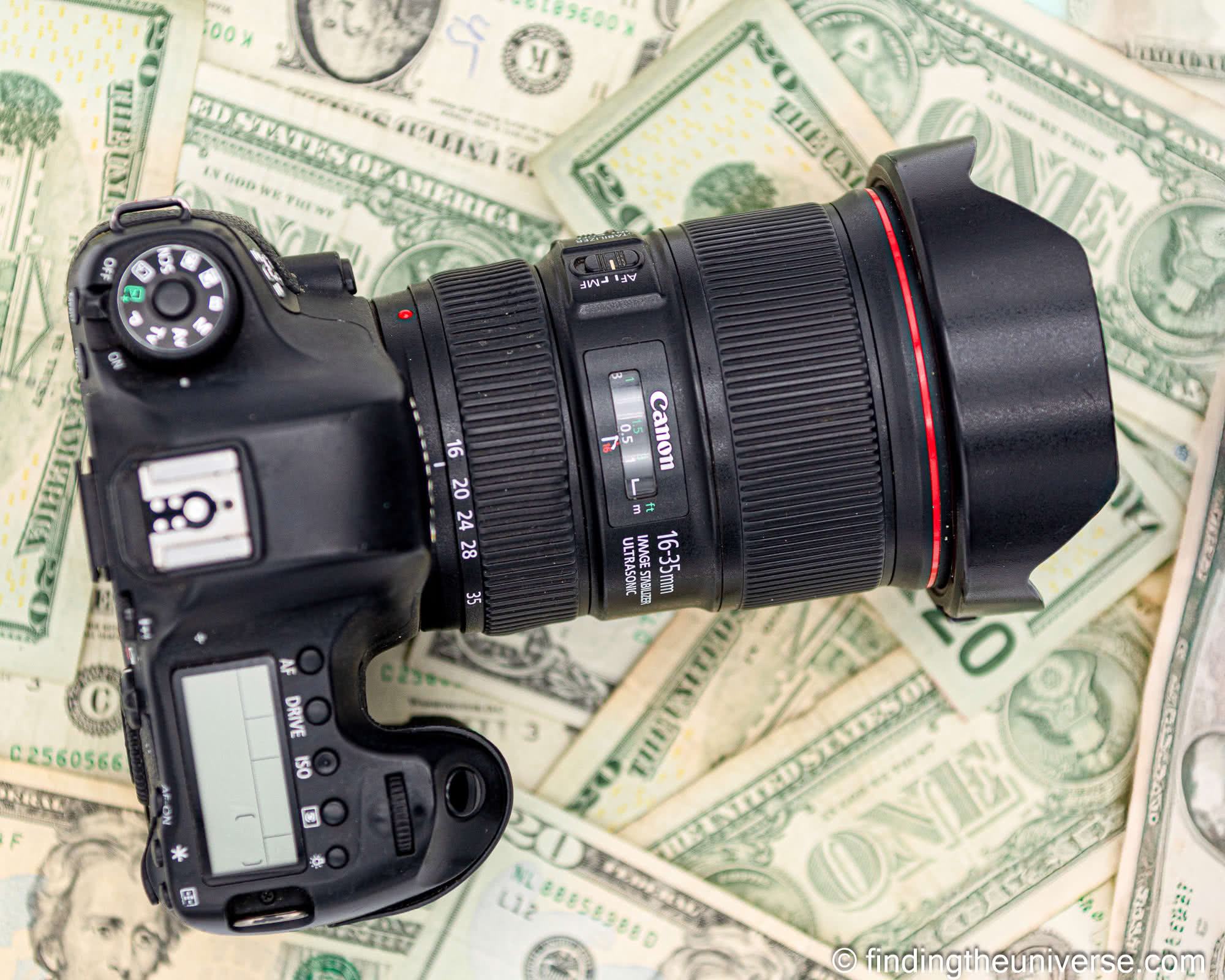
Invest in yourself and your product
As previously mentioned, photography is a skill which we develop over time. There’s always something new to learn, and there’s always new gear to buy.
I am a strong believer in the concept of continuous education. I always feel there’s something new about photography to learn, be that a new style of photography, a new way to edit photos, or a new bit of equipment to learn how to use.
Now, you do want to invest in high quality equipment, especially as you begin to make some money. This doesn’t mean the most expensive equipment but you certainly need to make sure your gear is up to the task. For example, a wedding or portrait photographer is definitely going to get better results with a wide aperture lens and a decent flash. A studio photographer doing things like portraits or animal photography will likely benefit from a good studio lighting setup and backdrop.
As you grow, you will want to make additional investments as needed and as you have the money. Start with the camera and gear you have and save up the money for the gear you think you need to make your photos better or your job easier. Don’t go into debt trying to buy gear you can’t afford!
You also don’t want to fall into the gear acquisition trap. It can be easy to believe that simply upgrading your camera and your camera gear will make you a better photographer.
In some cases, better gear will absolutely yield better results. However, good gear can’t replace skills. So don’t forget to keep investing in yourself. Whether that’s taking trips to new destinations to broaden your portfolio, enrolling in a class to learn new editing techniques, or going on a photography workshop to get new inspiration, investing in yourself is always a good idea.
You will also want to invest in your product to make it the best it can be. If you’re offering prints of your work for example, a high quality photo printer might be a sensible long-term investment. If you are going to spend hours editing photos, then a high-end photo editing computer and monitor for photo editing is going to be an excellent investment.
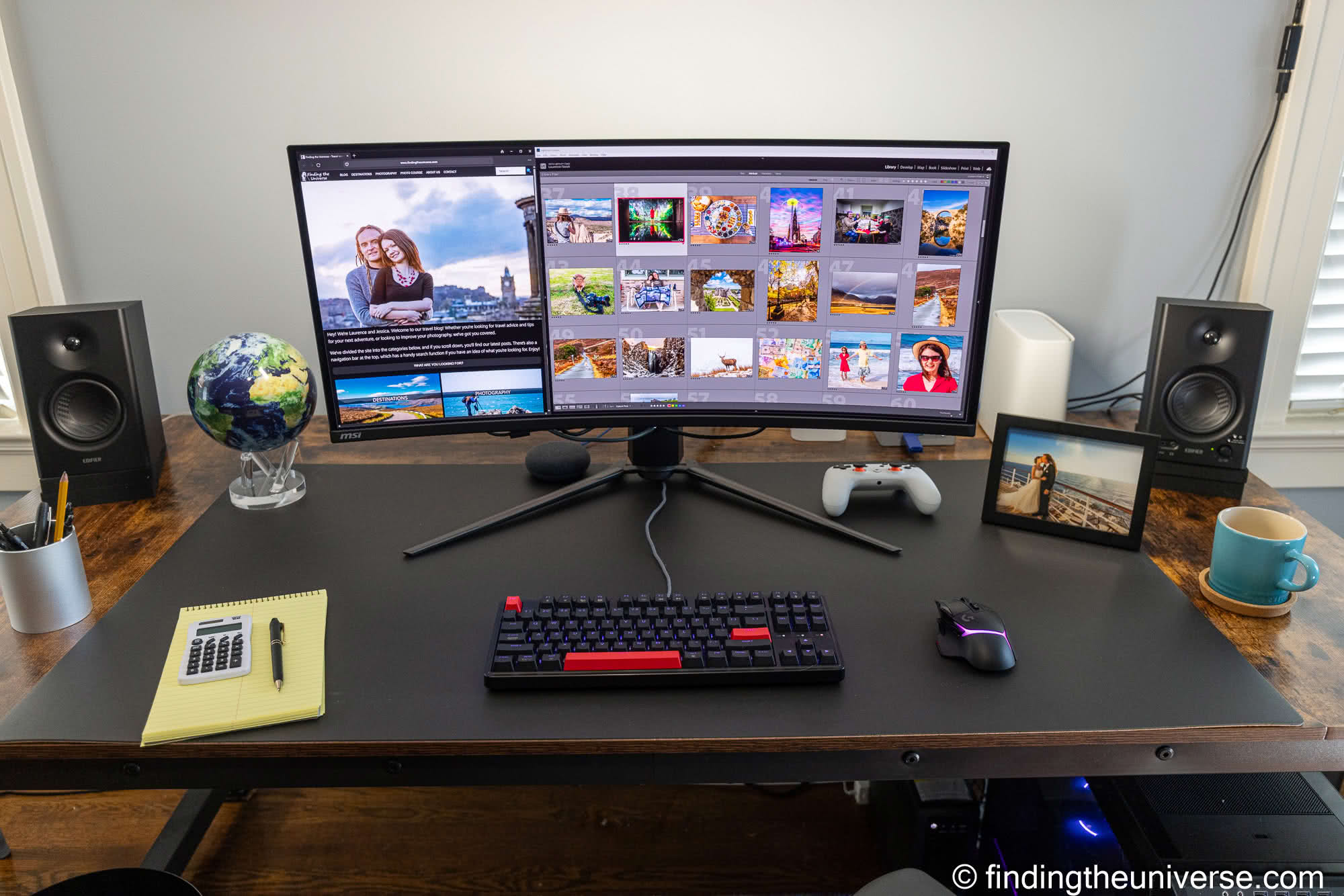

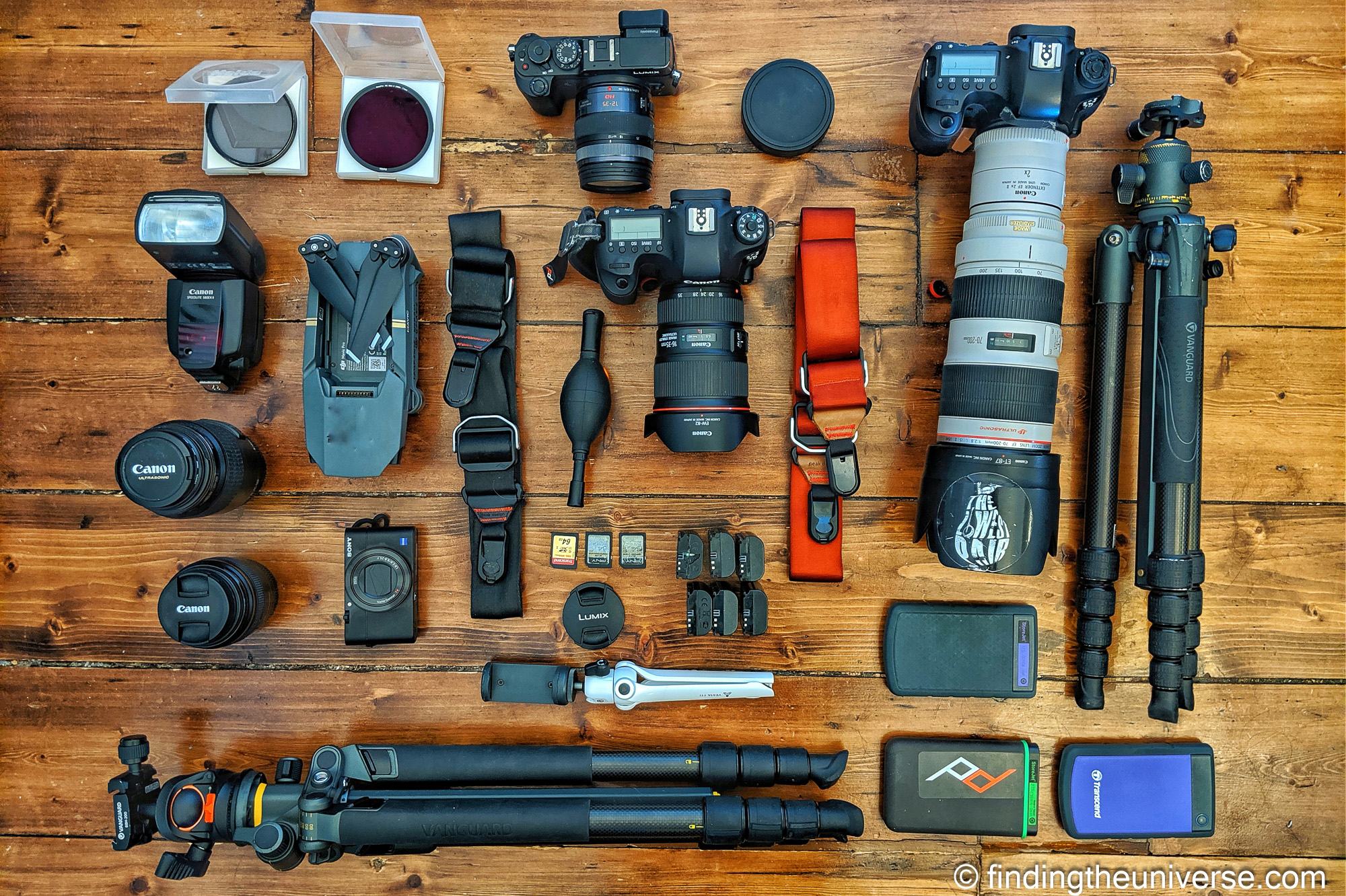

Be Professional
Your clients’ (and potential clients) impressions of you are very important, and it is key to be as professional as possible in all aspects of your business.
For example, if you have a photography studio or office, this should be clean and professional looking. If you meet clients in person, you should be dressed appropriately and professionally for that situation (especially if doing wedding or corporate photography). If you are selling at an art show booth you should act professionally and have business cards to give out to those interested etc.
If you want to have a successful photography business, you also need a professional online presence. This should take the form of a website at the very least but can also extend to social media channels. If you choose to run a social media channel, you need to commit to regular updates of content, and to interact with any comments you receive. Otherwise, it can seem like the business is inactive. If you can’t do that, it might be better not to do social media.
I would say that a website is the most important online presence to have. This is where clients can find you, see how to contact you, and see what services you offer.
It’s also an opportunity to showcase your work to potential clients, share testimonials from existing clients, and it can be a place to sell photos from directly if that’s something you do.
These days, people are used to professional looking websites that are easy to navigate and look good on mobile. An outdated website can very quickly put clients off. The good news is that once you have set your website up, it will need minimal ongoing work other than refreshing your prices, updating photos and other minor tasks.
I would personally recommend using a service that specializes in creating a nice looking website that matches the service you plan to provide. Whilst you might be able to save a little bit of money by building a website from scratch yourself, the end result is likely not going to look as professional unless you happen to be a professional web designer as well.
As examples of recommended services to check out, SquareSpace is an excellent system that lets anyone build good looking websites with minimal experience required. SmugMug is a fantastic tool for building an online site for selling your photos (You can get 15% off the plan cost and a 14-day free trial if you use this link).
There are other options of course, see my guide to selling photos online for many more options at various price points.
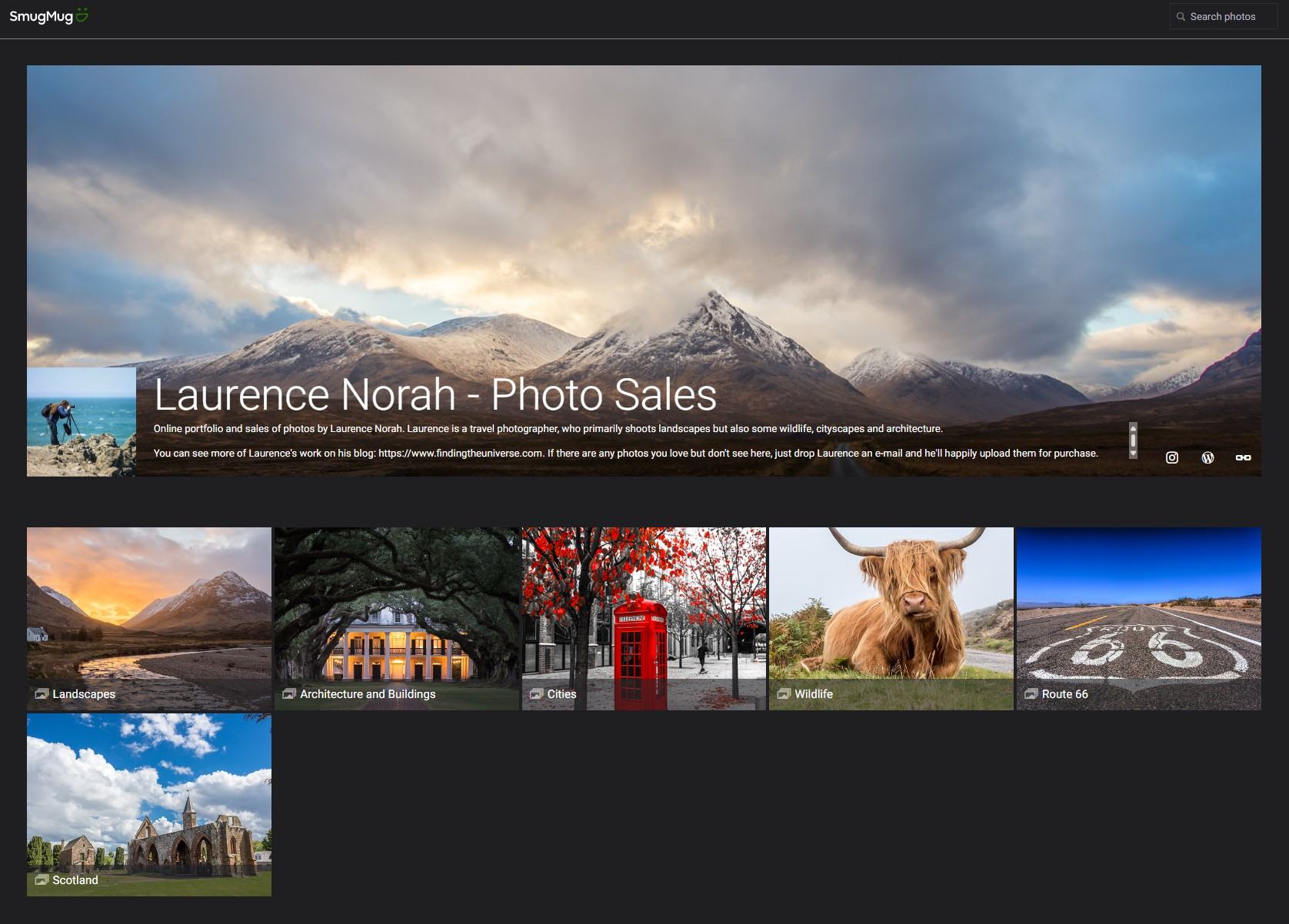

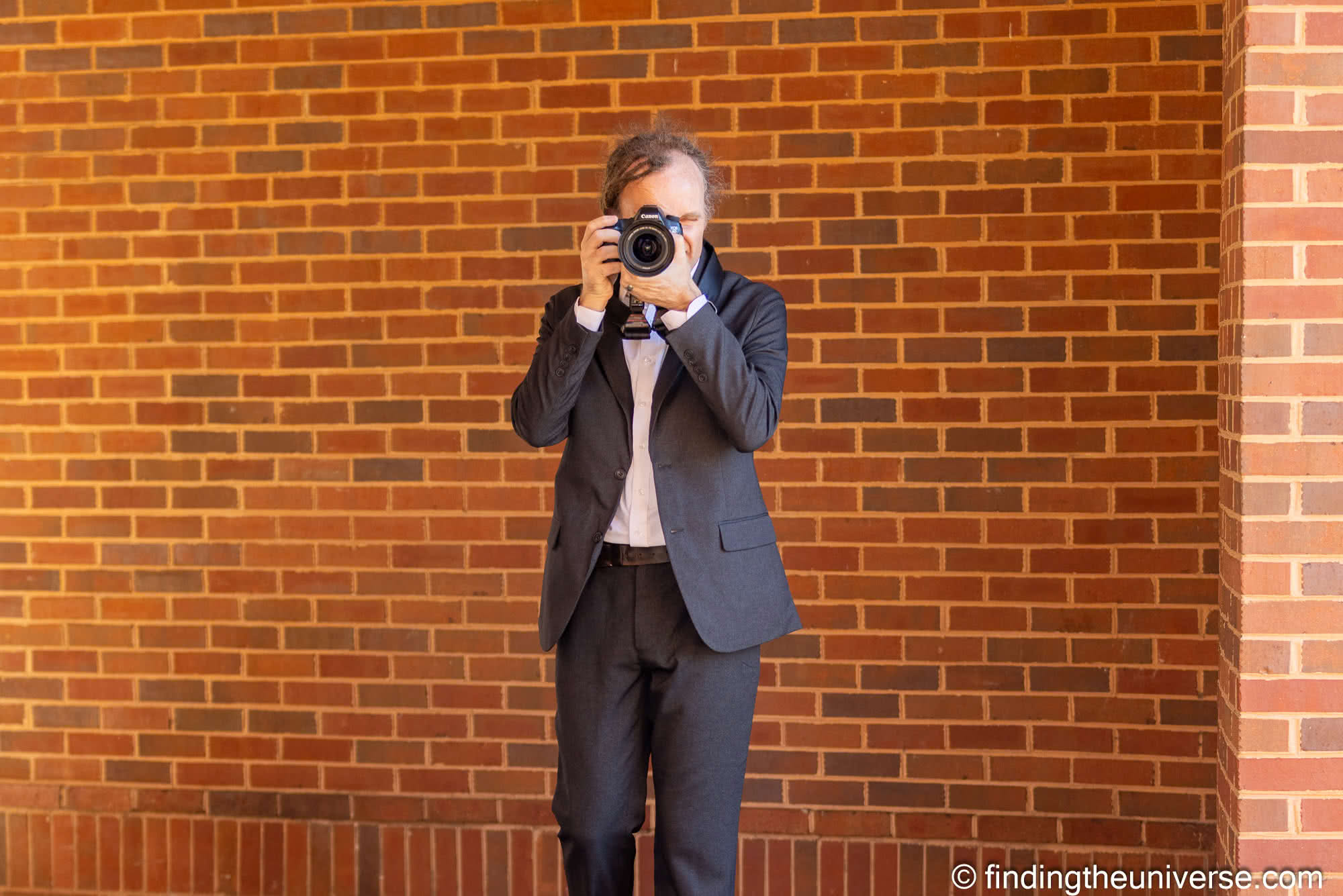

Invest in Marketing
You might be the greatest wedding photographer in the world, or at least, in your part of the world, but if no-one knows you exist, you aren’t going to get any work.
Whatever type of photography service you are offering, marketing is going to be key. There are multiple types of marketing, available at various price points. The key thing is to invest in marketing that is going to reach your audience. There’s no point paying for a marketing campaign that reaches an audience that isn’t relevant to you and your product.
Marketing is also something you want to do after you have set up your website and any social media channels, defined your prices and so on. There’s little point advertising your services if your target audience then has no way to find you and see what you offer.
Some marketing options to consider are as follows:
- social media, such as Facebook, Instagram and TikTok. Your marketing efforts can be both paid advertising as well as organic content
- offering your services or products for free as a way to grow your portfolio and get word of mouth recommendations as well as testimonials
- locally targeted marketing, good for a local service such as a portrait studio which focuses on providing photography services in a local community. This can be anything from advertising in a local newspaper to sponsoring local events, to local bulletin boards and even ads on your local Facebook Marketplace or Craigslist
- paid digital search ads such as Google Ads or Facebook Ads. Just note that these can be expensive and difficult to get right if you don’t know what you are doing, and it can be very easy to spend a lot of money with little return
- e-mail, which is to say, try to collect e-mail addresses whenever you can from both potential and existing clients. An e-mail list can be a powerful way to reach out to potential clients about what you are offering, promotions and so on
The main takeaway here is that you want to get word about your business out to people who are likely to want to buy your products and services, and a good marketing strategy is how to do that.


Be a Timely Communicator with Potential Clients
Ok, so you have setup your photography business, you know what you are selling, and you have potential clients. Hurrah!
Now you just need to be sure you convert your potential clients to paid clients. It is really important at this phase of your business that you respond very quickly to any outreach, be that phone call, e-mail, text message, or via social media.
When in the research phase for purchasing a photography product or service, many people will reach out to multiple providers at the same time. You want to always try to respond quickly, as this will give your potential client confidence in your ability to deliver.
If you think about any company you’ve ever contacted, how has it felt if you’ve not had a response in days? These days, with the speed of available communication tools, everyone wants a speedy response to their enquiry.
The worst thing is no response at all. I’ve seen this happen many times, particularly on social media. If someone asks a question on a social media post, you want to be sure to respond.
This is good for that potential lead, but also looks good to anyone else checking out your social media, as they will see you are proactive and responsive. If someone see a question with no response, it makes them wonder if you are still active, or if you care about your customers. Not a good look.


Believe in Yourself
My last tip is a bit more personal in nature. The reality is that photography can be a hard business. It can be a bit lonely as most photographers work alone. So it can be hard to get started and find your footing and your niche, and you might start to feel defeated.
My advice is to believe in yourself and your product, and to keep at it. Many photographers, especially when starting out, do a number of different types of photo gigs to make ends meet. Or they might do it in addition to a regular 9-5 job.
The main this is to know what you want and to go after it in a smart way. Be patient, be realistic, be persistent, believe in yourself.
Finally, don’t let the business of photography get in the way of also just enjoying and loving photography. Turning a hobby into a business can be a challenge, and you don’t want that challenge to overshadow your passion for photography.
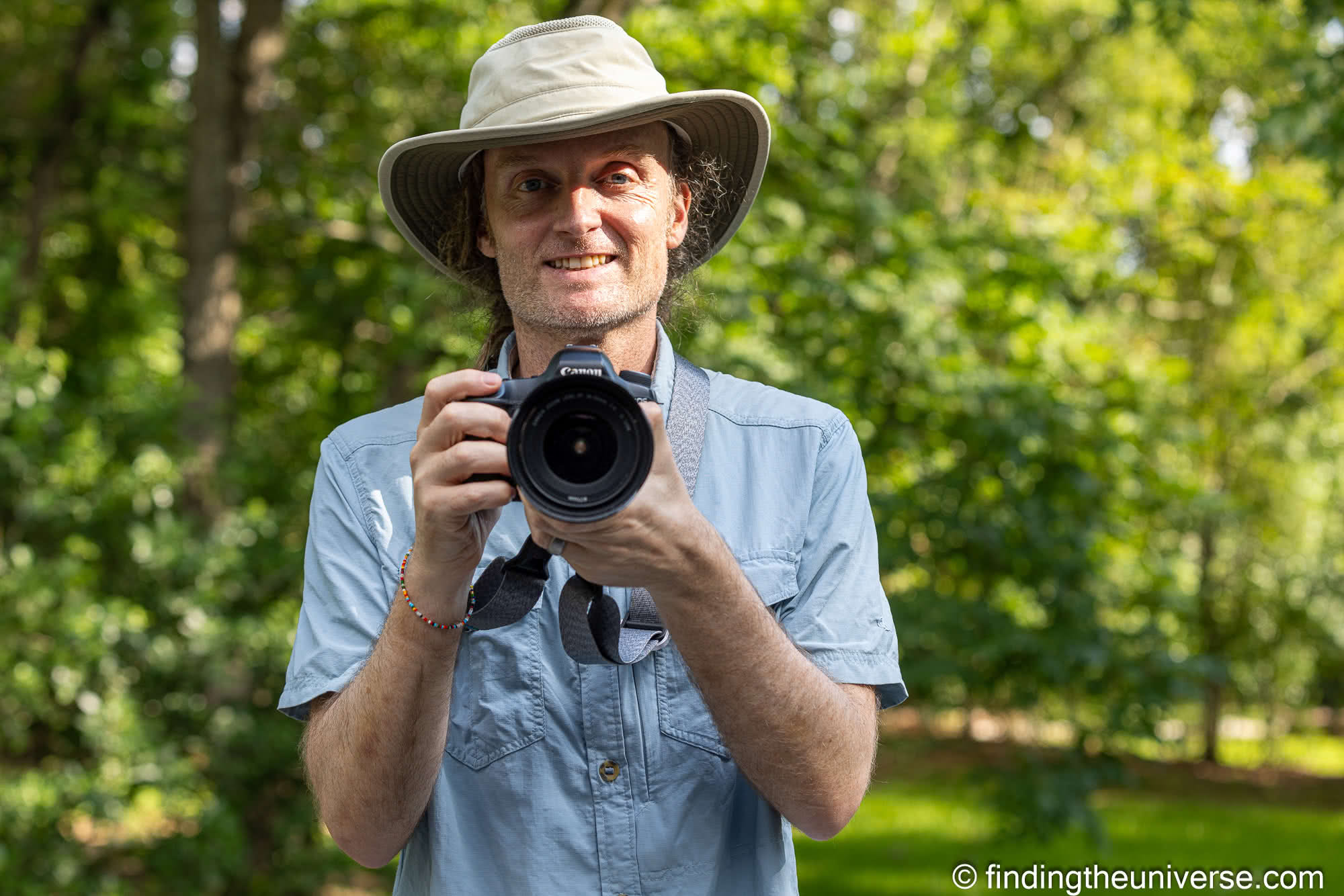

Further Reading
That’s it for my guide to running a successful photography business! If you found this useful, you might enjoy some of my other photography related content. Here are some articles to get you started.
- I have a guide to how to make money from your photography as well as a guide to how to sell your photos
- I have a guide to how to display your photos
- I have a guide to my favorite photo editing applications, as well as the best alternatives to Lightroom
- I have a guide to the best noise reduction software for some ideas on how to get the best out of your photos even when they might be a bit noisy
- We have a guide to how to use a compact camera, how to use a DSLR camera, and how to use a mirrorless camera. We also have a guide to how a DSLR works
- Knowing how to compose a great photo is a key photography skill. See our guide to composition in photography for lots of tips on this subject
- We have a guide to what depth of field is and when you would want to use it.
- We are big fans of getting the most out of your digital photo files, and do to that you will need to shoot in RAW. See our guide to RAW in photography to understand what RAW is, and why you should switch to RAW as soon as you can if your camera supports it.
- You’re going to need something to run your photo editing software on. See our guide to the best laptops for photo editing for some tips on what to look for.
- If you’re looking for more advice on specific tips for different scenarios, we also have you covered. See our guide to Northern Lights photography, long exposure photography, fireworks photography, tips for taking photos of stars, and cold weather photography.
- Color accuracy is important for photography – see our guide to monitor calibration to ensure your screen is set up correctly.
- If you’re looking for a great gift for a photography loving friend or family member (or yourself!), take a look at our photography gift guide,
- If you’re in the market for a new camera, we have a detailed guide to the best travel cameras, as well as specific guides for the best cameras for hiking and backpacking, the best compact camera, best bridge camera, best mirrorless camera and best DSLR camera. We also have a guide to the best camera lenses.
- If you want a camera or lens, but the prices are a bit high, see our guide to where to buy used cameras and camera gear for some budget savings options.
- We have a guide to why you need a tripod, a guide to choosing a travel tripod, a round-up of our favourite travel tripods and a review of the Peak Design Travel tripod.
Looking to Improve Your Photography?
If you found this post helpful, and you want to improve your photography overall, you might want to check out my online travel photography course.
Since launching the course in 2016, I’ve already helped over 2,000 students learn how to take better photos. The course covers pretty much everything you need to know, from the basics of how a camera works, through to composition, light, and photo editing.
It also covers more advanced topics, including astrophotography, long exposure photography, flash photography, and HDR photography.
You get feedback from me as you progress, access to webinars, interviews and videos, as well as exclusive membership of a Facebook group where you can get feedback on your work and take part in regular challenges.
It’s available for an amazing one-off price for lifetime access, and I think you should check it out. Which you can do by clicking here.
And that’s it! I’d love to hear about your thoughts and tips on running a successful photography business and as always am happy to answer any questions you have. Just pop them in the comments below and I’ll get back to you as soon as I can.
